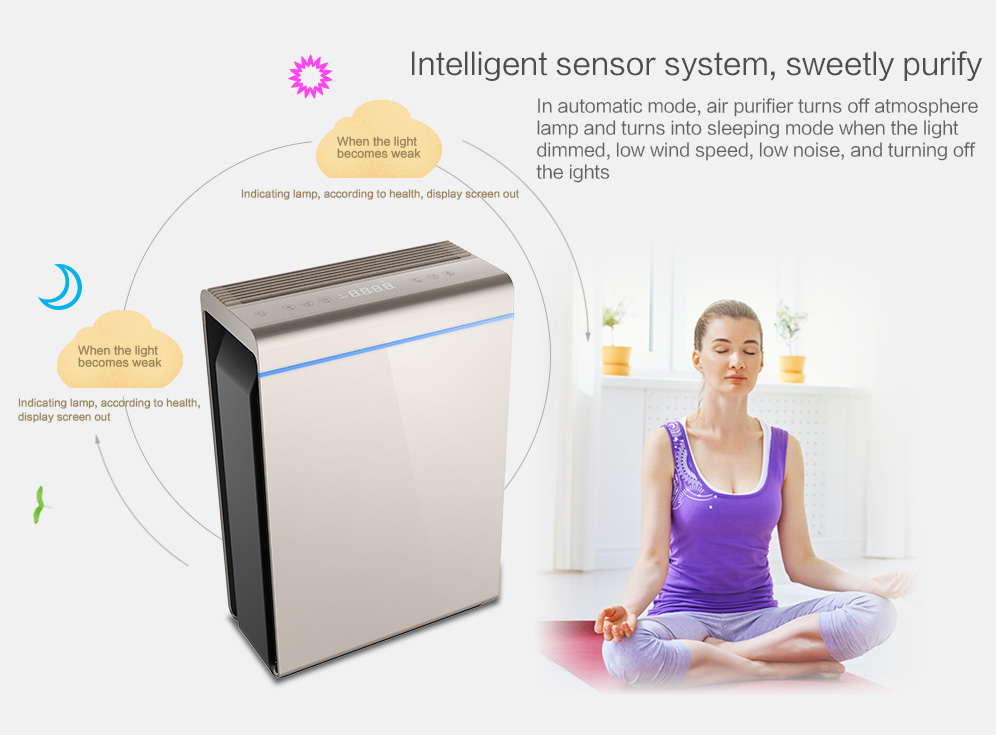Air purifier 3 big misunderstanding

Americans love to sterilize, Japanese people are afraid of pollen, and Chinese people hate PM2.5. In order to solve the serious smog pollution of air, Chinese people are generally willing to purchase the best small room air purifier for allergies. But in the face of thousands of air purifiers on the market, from hundreds of oceans to tens of thousands of oceans, after buying a home, what is the correct “opening method”?
The purchase of allergy room air purifier is mainly for indoor pollutants. In simple terms, indoor air pollutants fall into three categories:
Particulate matter: such as inhalable particulate matter (PM10), smaller particles can inhale PM2.5 in the lungs, pollen, pets or body exfoliation;
Volatile Organic Compounds (VOC): including various odors, formaldehyde or toluene pollution caused by decoration;
Microorganisms: mainly viruses and bacteria.
The most popular air purifiers on the market, with the most mature technologies and products, are mechanical filter purifiers. The mechanical filter air purifier consists of a high air volume fan and a filter screen, which can intercept some particulate matter and microorganisms. The large particles are adsorbed by one end hitting the filter screen, and the small particles are adsorbed by the electrostatic force of gravity of the filter fiber. Filter screens are often layered structures.
HEPA filter
According to different filtering levels, it is mainly divided into a primary effect filter, medium effect filter, and high-efficiency filter. The HEPA filter frequently mentioned requires the filtration efficiency to reach H13 in the latest standards, from H11 (filtration efficiency >98%) to H13 (filtration efficiency >99.97%). With the same CADR value, H13 filtration is used. The net purifier can reduce the concentration of pollutants faster, while the H11 filter takes longer. The higher the level of HEPA, the better. Of course, the higher the level, the more expensive the price.
The indoor environment in which we live is always in gas exchange with the outside world. Indoor pollutants, such as formaldehyde that has just been renovated, particulate matter produced by smoking, and odors of other objects, overall, indoor particulate matter or pollutants, have been in a state of dynamic balance. The function of the air purifier is to control the particulate matter or pollutants in the dynamic equilibrium state to a lower concentration range through the combination of “high air volume + high filtration efficiency”.
· Air purifier use error
Misunderstanding 1: No matter how big the square meter is, how many rooms, one is enough.
Truth: If you want to put a few units, you have to look at the situation. The purification area of the purifier is calculated from the CADR (clean air volume) of the particulate matter. At present, the applicable area of the AHAM standard is 0.08*CADR, and the applicable area of China’s national standard is (0.07-0.12)* CADR.
When the family considers the living space to match the purifier, when considering the specific area of the purifier and the maximum space processing effectiveness in the purifier description, generally one conventional air purifier corresponds to one room, and the large-sized room can be considered. The corresponding air purifier is equipped with a number of rooms.
Misunderstanding 2: The kitchen puts the air purifier, then the cooker hood is dry.
Truth: The fumes from the home cooking process are one of the important sources of indoor PM2.5. The kitchen is a hard-hit area for home air purification. It is customary to understand that the kitchen air has a range hood, but objectively the cooking fumes are an important source of indoor PM2.5, and the soot is extremely harmful to the air pollution. At the same time as the home cooking process and after the end of the range hood, the kitchen is equipped with an air purifier is also a good purification option.
Myth 3: A filter to permanent
Truth: At present, the filter commonly used in air purifiers is a HEPA filter. The HEPA filter will gradually become saturated with the increase of adsorbed particles, which leads to a decrease in the efficiency of the purifier and an increase in energy consumption.
In the process of using air purifiers, many families can easily neglect the life cycle and cleanliness of the air purifier filter. During the operation of the purifier, as the adsorbent increases and the purification function decreases, the filter will continue to function. Reduce and close to the life cycle. At present, more brand air purifiers on the market will have an intelligent reminder to replace the filter screen and clean the reminder function and must be replaced in time when it needs to be replaced.
Regarding the secondary pollution of the filter, the main reason is that the particles adsorbed on the filter screen will become a hotbed of virus pathogens, which will multiply and breed bacteria. If it is not replaced for a long time, it will not only purify but continue to use it. Source of pollution.
When purchasing an air purifier, in addition to selecting a high CADR value, a high CCM value, a high energy efficiency value, and a low noise device, it is also determined according to the actual usable area of the home and the specific needs. Choose the air purification equipment that is best for your home to completely improve the living environment.
Contact us for more products and discounted prices
Helen:
+86 13922346046
info@olansiglobal.com
https://www.olansiglobal.com